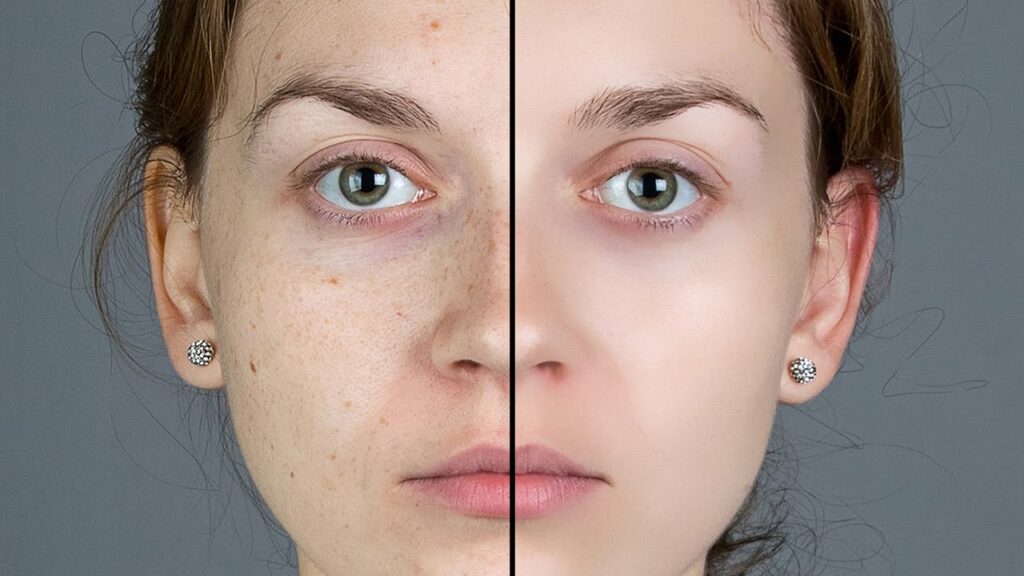Mastering the Art of Skin Retouching: A Comprehensive Guide to Smooth and Soften Skin in Photoshop

Introduction:
In the realm of digital photography and image editing, achieving flawless and radiant skin tones is a coveted skill. Adobe Photoshop, the industry-standard software for image manipulation, provides a plethora of tools and techniques to smooth and soften skin, enhancing the overall quality of portraits. This comprehensive guide will take you on a step-by-step journey through the intricacies of skin retouching, offering insights, tips, and hands-on instructions to help you refine your skills and achieve professional-level results.
Section 1: Understanding the Basics of Skin Retouching
1.1 Importance of Skin Retouching: Explore the significance of skin retouching in digital photography. Understand how this process can elevate the quality of portraits by minimizing imperfections, enhancing skin texture, and creating a polished, yet natural look.
1.2 Ethical Considerations: Before delving into the techniques, it’s crucial to discuss ethical considerations in skin retouching. Strike a balance between enhancing natural beauty and preserving the authenticity of the subject, avoiding excessive alterations that may distort reality.
Section 2: Preparing the Image for Skin Retouching
2.1 Start with a High-Quality Image: Ensure optimal results by beginning with a high-resolution and well-exposed image. A high-quality source provides the foundation for detailed skin retouching without compromising image integrity.
2.2 Duplicate the Background Layer: Create a duplicate of the background layer to work non-destructively. This ensures that you can always refer back to the original image and make adjustments without altering the source file.
Section 3: Utilizing Basic Skin Smoothing Techniques
3.1 Frequency Separation: Uncover the power of frequency separation, a technique that separates image details from color information. Learn how to use this method to address both texture and tone independently, providing a nuanced approach to skin retouching.
3.2 Gaussian Blur Technique: Explore the application of the Gaussian Blur filter to achieve subtle skin smoothing. Understand how to selectively apply blur to specific areas while preserving essential details, creating a balanced and natural look.
Section 4: Advanced Techniques for Precise Skin Retouching
4.1 Dodge and Burn: Master the art of dodging and burning to enhance highlights and shadows selectively. This technique allows for precise control over the tonal variations in the skin, adding dimension and depth for a lifelike appearance.
4.2 Clone Stamp and Healing Brush: Delve into the usage of the Clone Stamp and Healing Brush tools for targeted retouching. Address blemishes, scars, and imperfections with precision, maintaining a natural skin texture.
Section 5: Enhancing Skin Tone and Color
5.1 Color Correction with Curves: Explore color correction using Curves adjustments to achieve a harmonious and natural skin tone. Learn how to refine color balance while preserving the overall integrity of the image.
5.2 Color Grading for Skin Enhancement: Dive into color grading techniques to enhance the warmth and vibrancy of skin tones. Discover how to apply subtle color adjustments to achieve a polished and appealing look.
Section 6: Special Considerations for Portrait Retouching
6.1 Eye and Teeth Enhancement: Extend your skills by incorporating eye and teeth enhancement into your portrait retouching workflow. Techniques such as brightening eyes and whitening teeth contribute to an overall polished appearance.
6.2 Hair Retouching: Address flyaway hairs and enhance hair texture using targeted retouching techniques. Achieve a professional finish by refining hair details without compromising the authenticity of the image.
Section 7: Tips for a Natural and Subtle Finish
7.1 Maintain Skin Texture: Emphasize the importance of maintaining skin texture throughout the retouching process. Avoid excessive smoothing that can result in an unnatural, plastic-like appearance.
7.2 Zoom Out for Overall Assessment: Regularly zoom out of the image to assess the overall impact of your retouching efforts. This helps in avoiding over-correction and ensures a natural and cohesive look.
Conclusion:
As you navigate through the intricate landscape of skin retouching in Photoshop, remember that subtlety and precision are key to achieving professional and natural-looking results. This comprehensive guide has equipped you with the knowledge and techniques necessary to smooth and soften skin while preserving its inherent texture and authenticity. Whether you’re working on portraits, fashion photography, or personal projects, honing your skin retouching skills will undoubtedly elevate the visual appeal of your images, creating a polished and captivating final product.




